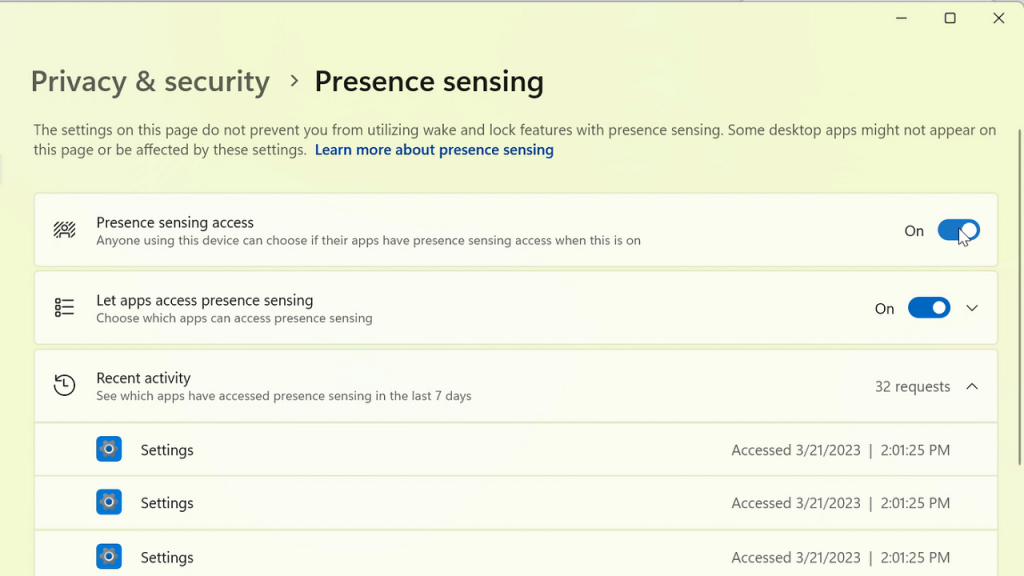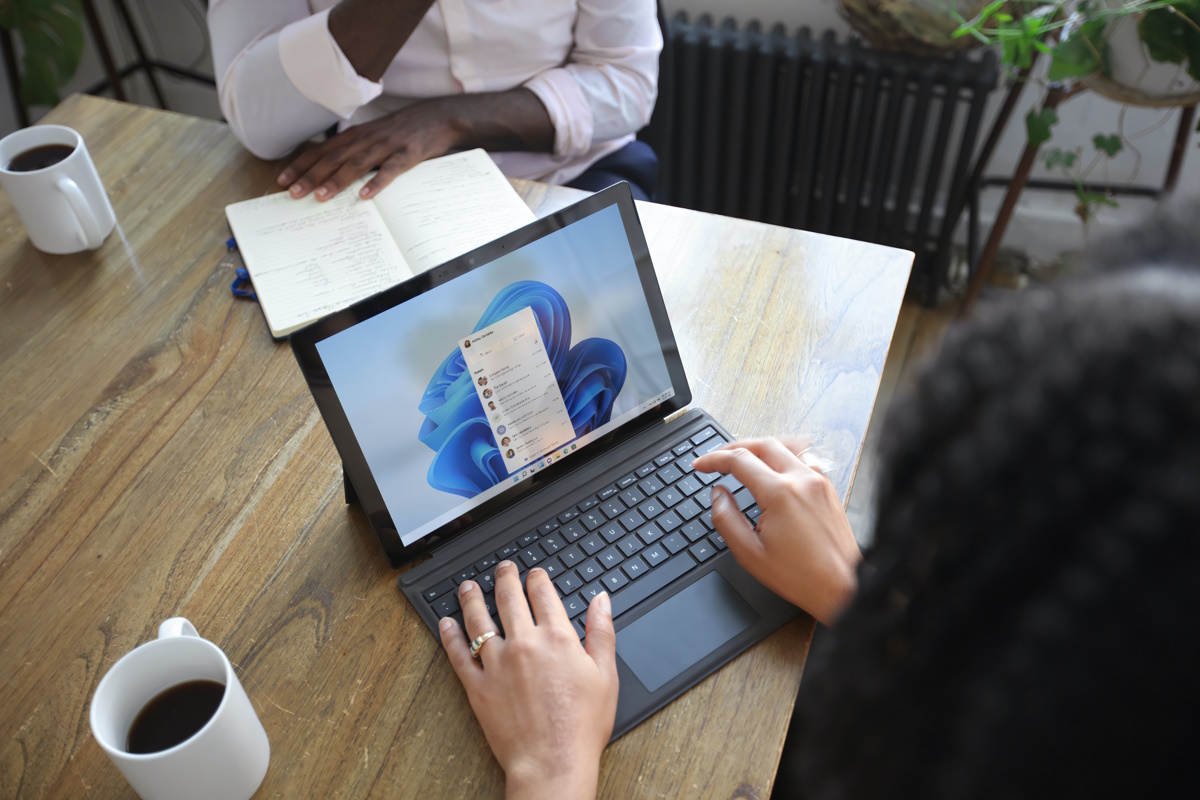Microsoft is working on integrating Presence Sensing privacy settings and APIs to its Windows 11 operating system. Presence Sensing makes use of sensors that determine whether a user is near a device. This sensing activity may lead to automatic actions, such as locking the device when the user's presence is no longer detected, or to wake a PC when a user is coming inside the sensor's detection radius.
Soon, Windows 11 users may have control over the Presence sensing capabilities of their devices. Microsoft launched a new privacy setting and API in the Insider Preview build 22624.1610, which it released just a moment ago.
Windows 11 users who install the build on devices with presence sensing capabilities may open Settings > Privacy & security > Presence sensing to control the functionality.

There, they find several options, including one to disable Presence sensing access for all users of the device or for apps that are installed on the device.
The two options give users control over the feature. Toggling them off disables the functionality on the device. It is unclear at this point if certain core operating system features continue to have access to Presence sensing after users turn the feature off.
The Presence sensing Settings page lists recent activity as well on the page; this is useful to check which apps have accessed the functionality on the device in the past. The listing is limited to activity of the past seven days, and lists access chronologically.
Each app is listed with its name, access date and time under recent activity.
Microsoft notes on the Windows blog that it is not collecting any images or metadata, and that all processing "is done locally on the device hardware to maximize privacy".
Application developers may use the newly created API to integrate presence sensing capabilities into their applications. Microsoft notes: "App developers with devices with compatible presence sensors can target apps to request and read user presence information after requesting a human presence capability."
The main API page is available here. It lists technical information, but also additional information. For users, the following information may be relevant also:
- Presence sensing may have a "significant impact" on security, responsiveness and performance.
- Devices may be locked automatically when left unattended "to protect sensitive files and other info".
- Developers may infer user intent to "reduce the response time required from detection to authentication or interaction".
- Devices on battery may last longer by "reducing unnecessary screen idle time".
Soon, privacy apps and policies will be available to manage the feature as well.




Recommended Comments
There are no comments to display.
Join the conversation
You can post now and register later. If you have an account, sign in now to post with your account.
Note: Your post will require moderator approval before it will be visible.